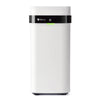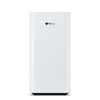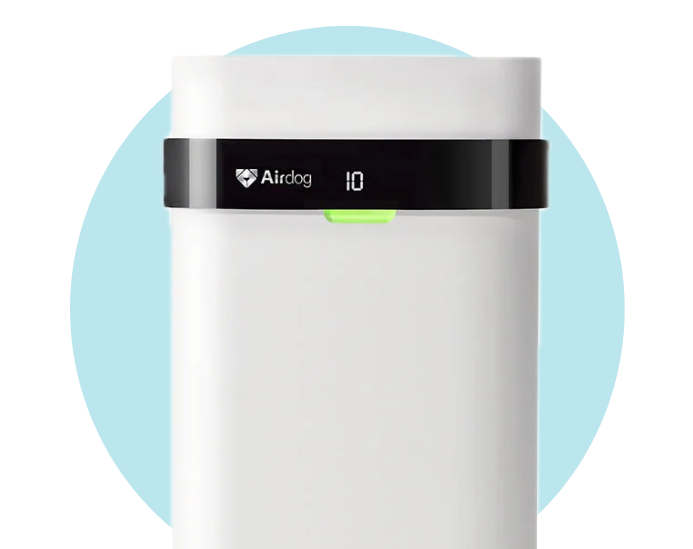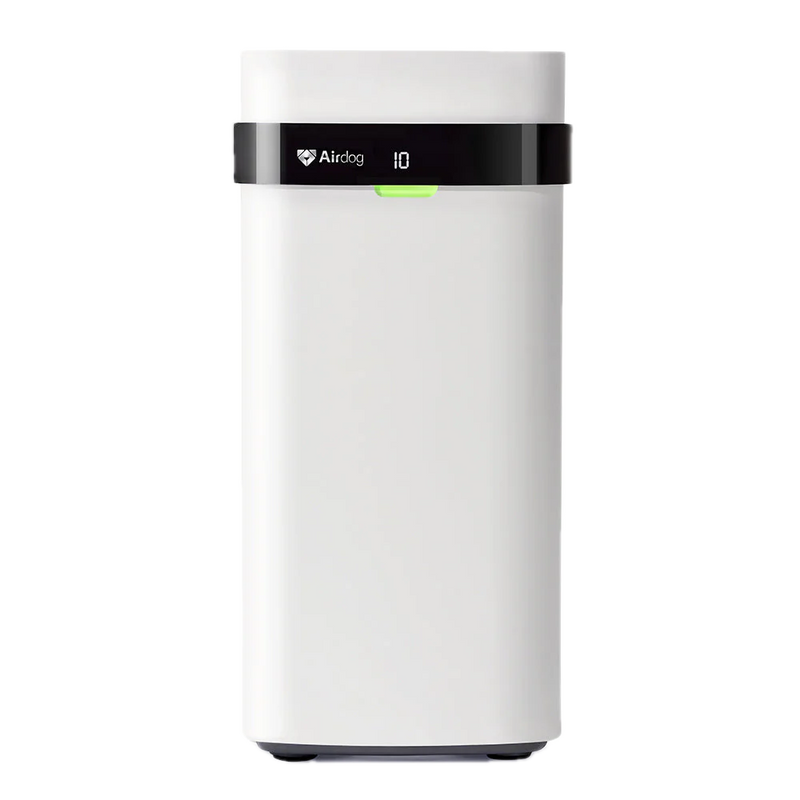Did you know that a seemingly harmless spot of mold in your home could be a silent predator, affecting your health and the integrity of your living environment? With an estimated 70% of homes affected by mold, understanding effective remediation is crucial.
This article cuts through the myths surrounding heat treatment, offering a science-driven exploration of whether increased temperatures can truly eradicate mold infestations. We'll delve into the biological mechanisms of mold growth and survival, providing you with the knowledge needed to make informed decisions about mold removal in your environment.
The Science of Mold and Heat
Mold, a type of fungus, thrives in environments that many of us unknowingly create within our homes. It's not merely about the aesthetics or the musty odor; mold can have serious implications for health and home.
Defining Mold: The Basics
-
Reproduction: Mold reproduces through tiny, airborne spores. These spores are omnipresent, waiting for the ideal conditions to start their life cycle.
-
Growth Requirements: For mold to grow, it needs moisture, warmth, and organic material to feed on. Unfortunately, our homes provide an abundance of all three, especially in damp, humid conditions found in places like basements, kitchens, and bathrooms.
-
Consequences of Mold Growth: Beyond the unsightly spots and a musty odor, mold can cause a range of health issues, especially for those with allergies, asthma, or compromised immune systems.
Heat as a Mold Combatant
-
Temperature Thresholds: Studies and expert opinions, including those from the United States Department of Agriculture, have highlighted that most molds can be killed at temperatures of 140 to 160 degrees Fahrenheit. This temperature range is crucial for effectively using heat as a mold remediation technique.
-
Application Methods: Various methods can be employed to introduce heat to mold-infested areas, such as high-heat drying of clothing, steam cleaning of surfaces, and professional-grade heat treatment for entire rooms or homes.
Mechanisms of Heat Action on Mold
-
Cellular Impact: At the cellular level, heat affects mold by denaturing proteins and nucleic acids, leading to cell death. This process is not instantaneous; it requires sustained exposure to high temperatures to ensure complete eradication of mold colonies.
-
Dehydration: Heat treatment also works by dehydrating the mold. By removing moisture, one of the critical elements mold needs to grow, heat treatment can halt the growth cycle of mold spores.
-
Preventing Spore Spread: One of the key advantages of using heat to kill mold is that it can help prevent the spread of spores. High temperatures can neutralize spores, making them incapable of reproduction, thereby addressing both the visible and invisible aspects of mold infestation.
Methods for Applying Heat to Kill Mold
Various methods employing heat to combat mold have been suggested and validated by experts, including Reagan Environmental. These techniques offer practical solutions for different scenarios, whether you're dealing with moldy clothing, damp walls, or widespread infestation in larger spaces.
Dryer Heat for Moldy Fabrics
-
High Heat Setting: Placing moldy clothes or fabrics in a dryer on the highest heat setting for at least 20 to 25 minutes can effectively kill mold spores. This method leverages the dryer's ability to generate temperatures within the 140 to 160 degrees Fahrenheit range necessary to neutralize mold.
-
Precautions: It's vital to ensure that the fabrics can withstand high temperatures without damage. Delicate items may require a different approach or professional cleaning to avoid shrinking or deterioration.
Steam Cleaning for Surface Mold
-
Direct Application: Using a steam cleaner on mold-infested areas like bathroom tiles, kitchen walls, or upholstery can be highly effective. The steam's heat not only kills mold but also penetrates porous surfaces to eradicate hidden spores.
-
Considerations: While steam cleaning is versatile and safe for various surfaces, caution should be taken with materials that might be damaged by moisture or heat, such as certain types of paint or delicate fabrics.
Professional-Grade Heat Treatment
-
Professional Technique: This method involves heating the entire affected area or even the whole building to a temperature that is lethal to mold. This technique is a comprehensive approach that tackles not just the visible mold but also the unseen spores in the air and within structures.
-
Specialized Equipment Required: This method necessitates professional equipment and expertise to safely and effectively raise and maintain the temperature without causing damage to the property or risk to the occupants.
Space Heaters in Contained Spaces
-
Targeted Heat Increase: In smaller, contained spaces, carefully placed space heaters can raise the temperature sufficiently to kill mold. This approach requires careful monitoring to ensure the temperature reaches but does not exceed the 140 to 160 degrees Fahrenheit range.
-
Safety First: Using space heaters comes with inherent risks, such as the potential for fire if left unattended or placed too close to flammable materials. It's crucial to use this method with utmost caution and constant supervision.
Ensuring Material Safety: Across all these methods, one common and critical consideration is the ability of items and materials to withstand high temperatures without sustaining damage. From clothing and upholstery to wall paint and structural materials, understanding the heat tolerance of various substances is essential to preventing harm while removing mold.
Limitations and Considerations
While heat treatment can be an effective solution in some circumstances, it's not a one-size-fits-all remedy. Certain constraints and potential risks must be acknowledged to ensure the method's effectiveness and safety.
Potential for Damage to Sensitive Items or Materials
-
Heat Sensitivity: Various household items and building materials have different thresholds for heat tolerance. For instance, delicate fabrics, certain types of plastics, and specific kinds of paint may warp, melt, or degrade when exposed to high temperatures.
-
Material Considerations: Wooden structures can suffer from warping or cracking under extreme heat, while electronic devices can be damaged beyond repair. It's crucial to remove or protect sensitive items and materials before applying heat treatment to kill mold.
Risk of Burns or Fire
-
Supervision Required: The use of space heaters or professional-grade heat treatment equipment necessitates continuous monitoring. There's a risk of burns if individuals come into direct contact with heat sources or if items within the treated area overheat.
-
Fire Hazards: Without proper precautions, the application of heat can pose significant fire risks, especially in areas crowded with flammable materials. Ensuring adequate space and employing fire safety measures are vital steps in preventing accidents.
Inadequacy in Addressing Underlying Moisture Issues
-
Temporary Solution: While heat can kill existing mold spores, it does not address the root cause of mold growth—excess moisture. Without tackling the underlying moisture problems, such as leaks, condensation, or high humidity, mold is likely to recur.
-
Holistic Approach Needed: Integrating heat treatment with moisture control measures, like repairing leaks and improving ventilation, is crucial for a long-term solution to mold problems.
Importance of Professional Assessment
-
Expertise Matters: The complexities involved in effectively and safely using heat to kill mold underscore the importance of professional assessment, especially for large or persistent mold problems. Experts like those at Reagan Environmental have the knowledge and tools to evaluate the scope of mold infestation and to recommend the most appropriate remediation strategies.
-
Comprehensive Evaluation: A professional mold assessment goes beyond surface-level inspection. It involves identifying all affected areas, including hidden mold within walls or under floors, and determining the moisture source. This thorough evaluation ensures that the chosen remediation method tackles both the mold and its cause.
Conclusion
While heat offers a valuable option for mold remediation, true protection lies in a comprehensive approach. By understanding the interplay between moisture, temperature, and air quality, you can take control of your indoor environment. Addressing moisture issues and combining heat treatment with effective air management practices empowers you to create a healthier, mold-resistant space.
At Airdog, we recognize the importance of maintaining a healthy environment, which is why our air purifiers and humidifiers are designed to help manage indoor air quality and moisture levels. By complementing heat-based treatments with reliable air purification, you can protect your home or workplace from the ongoing threats of mold, allergens, and harmful pathogens, ensuring a cleaner, healthier living space for everyone.





